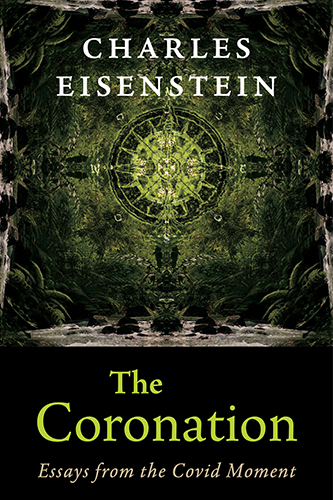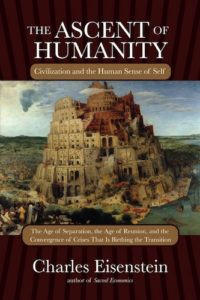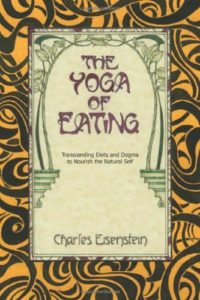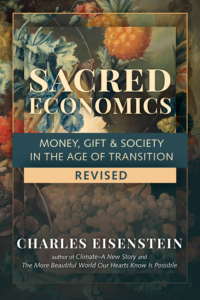The More Beautiful World Our Hearts Know Is Possible
Chapters
Chapter 13: Reality
How do we do that? This world of miracles, the things we cannot make happen, is a world of the gift. To live in it we must let go of the old ways of controlling, keeping, and holding back. We must learn to see the world through the eyes of the gift. Today most of us live simultaneously in both worlds, the old and the new; therefore our experience of miracles is haphazard. They seem to violate the laws of the physical or social universe, which is to be expected, as those laws are formed from the perceptions of the separate self.
Despite my call for naiveté, I also want to insert a note of caution here, because there is such a thing in this world as pursuing an impossible fantasy. There is such a thing as a delusion distracting one from the work at hand. How can we tell when we are in service to a real possibility, and when we are deluding ourselves, pursuing not a vision but a mirage? I’m not advocating a credulous confidence in whatever fantasy happens to be comforting.
A host of New Age teachings about “reality creation” tell us that in order to “manifest” something in this world, we must align our thoughts and beliefs with it, and it will appear. I use sarcastic quotation marks here, but some of these teachings are actually quite sophisticated. One can think of many situations in which beliefs do, in fact, create reality. For one thing, our beliefs and stories contain within them roles for ourselves that we must play out in order to accomplish anything in the world. Absent, for instance, a belief that it is possible to ride a unicycle, one is unlikely to devote the weeks necessary to learn how. Absent a belief that a music festival can happen, no one will do the things necessary to make it happen. Only when someone believes “I can do it,” will they even try. When our beliefs change, so do our motivations and perceptions. We do new things and see new opportunities.
Beyond these mundane vehicles for the translation of belief into reality, I find something more mysterious at work as well. A kind of magic does happen when a person undergoes a profound change in worldview. The mundane vehicles I have described are perhaps instantiations of a more general principle. The problem with the New Age teachings about reality creation or the Law of Attraction is not so much in their metaphysics as in their application. I see two key difficulties. First, it is not as easy to alter one’s beliefs as we would like to think. Ordinarily, we cannot change a belief through an act of will, for a state of belief is a state of being. A belief isn’t just a vapor in the brain. If you have, like I, tried to change your “limiting beliefs” through affirmations and so forth, you might have noticed that even as you repeated to yourself, “I now experience complete financial abundance” or “Every day in every way, life is getting better and better,” a part of you is thinking, “Yeah right. I’ll believe it when the results come in.” When the results do not, in fact, come in, you might discard the whole reality creation program as a lot of New Age hooey. But really, you have neither proven nor disproven the basic principle, because you were entertaining a fake belief, or at best a conflicted belief. Part of you may have believed it, but did it really feel true? Did it really feel possible?
This leads to a second problem: it is not ours to decide what is true or possible. Some teachings ask us to start by creating a vision, but this is mistaken; the proper way to start is to receive a vision. I call it “The vision of that which wants to be born.” Not having invented it ourselves, we sense that it has a beingness of its own. Doubts may still assail us, but underneath the doubts there will be a knowing that comes from having seen something. The doubts arise from the wounds I have mentioned herein: the repeated betrayal of our idealism, the crushing of our spirit, the effects of the relentless ugliness of industrial society. We think, “What if I’m just a fool? What if I don’t deserve such a blessing? What if humanity doesn’t deserve it? What if we missed our chance? What if something beyond my control happens to ruin it?” Indeed, the more beautiful the vision (whether for oneself or the world), the more painful the doubts that arise. The radiance of that which wants to be born illuminates the shadows, bringing them into the light of awareness that they may be healed. I suggest becoming sensitive to the difference between these doubts and the secret, sober knowledge that you are fooling yourself.
The first step in creating change, then, is to receive a vision that feels true. The second step is to heal the wounds and doubts that that vision illuminates. Without doing that, we will be conflicted, simultaneously enacting both the new story and the old one that accompanies the wounds. The third step is to bow into service to that which wants to be born. This process is not linear. Usually, the vision comes more and more into focus as we heal the doubts that obscure it; that, in turn, allows us to enter more deeply into its service. Deeper service, in turn, brings up new dimensions of the vision along with deeper wounds. The path of service is a path of self-realization.
When we are in service to something that is real, when we speak of it our words have power. Others can feel its reality too. That is why some people have the seemingly magical ability to speak things into existence. When they say such-and-such is going to happen, everyone believes it is going to happen, even if its happening depends on everyone believing it will happen.
To be fully in service to something one has experienced as real is the essence of leadership in a nonhierarchical age. A leader is the holder of a story, someone whose experience of its reality is deep enough so that she can hold the belief on behalf of others. Many leaders today are weak, because they don’t really believe in what they profess. How can they inspire anyone else to believe, either? Not believing themselves, they quickly capitulate at the slightest pressure, glad to settle for half-measures. If you call for the elimination of all nuclear weapons, but don’t really believe it could happen, you will settle for a limited test-ban treaty. If what you want is a halt to all clear-cutting but don’t believe it is possible, you will settle for a mere slowdown.
The deeper our service to that which wants to be born, the more it is able to arrange the synchronistic encounters and fortuitous events that allow us to accomplish that which lies beyond our understanding of cause and effect. We might say that the primary “technology” of the Age of Reunion is service. We offer our time, energy, skills, and lives as gifts, stepping into trust, letting go of the habit of looking first and foremost after one’s self. Only then can we fully align with the vision. From that alignment, a tremendous force is born. Our expanded selves are far more powerful and less fearful than the discrete, separate individual who, separate from the world, can only manipulate it by force, and looks with wariness and wonder at the amazing coincidences that line up as it lets go and plunges into service. Obviously, since these are not things that we know how to “make” happen, they happen as gifts, confirming the universal principle of the gift: that giving and receiving always come into balance in the end.
This whole process of cocreating change starts not with faith but with honesty. We must first catch a glimpse of something that we recognize as real. One kind of honesty is to recognize our delusions and see what is in front of our faces. This can be painful. It has been humiliating to admit, “I didn’t really believe what we’ve been working on is possible; all along I was doing it to belong, to appear virtuous to myself and others, and simply to stave off despair.” But there is another application of honesty that is braver still: to believe in a true vision that contradicts the consensus view of what is possible or worthwhile. It takes more courage to believe what we know is true than to disbelieve what we know is false. For the visionary, that knowledge is in the beginning a lonely knowledge, surrounded by a welter of doubt both within and without. To trust a moment of clarity and carry it forward, to translate it into belief and act from it amid all the voices that say it is crazy or impossible, is no trivial matter.
Endnote:
11. Occasionally people do report the experience of having successfully changed a belief as a volitional act. This does not mean they applied superior willpower to banish doubt and negativity, but that the belief was ready to change. When the state of being corresponding to a given belief has run its course, then the belief changes with just a little nudge.






